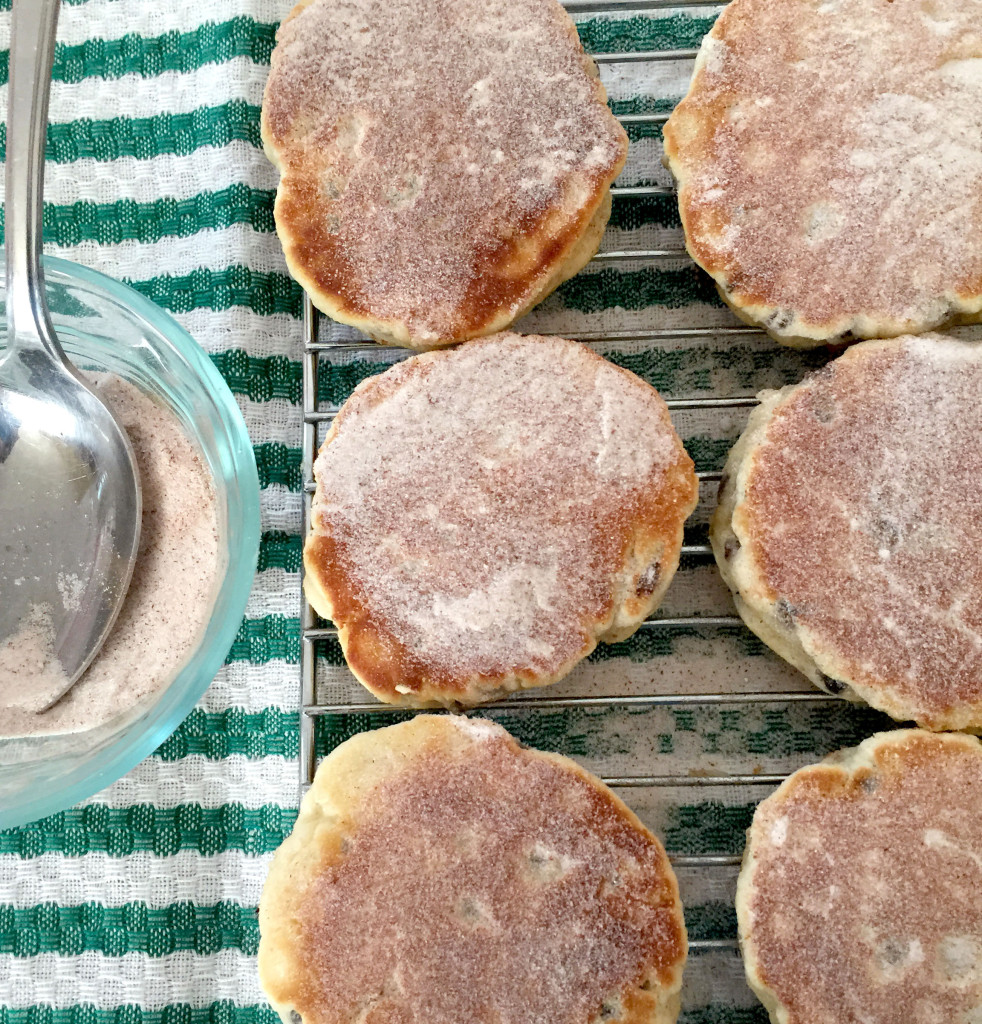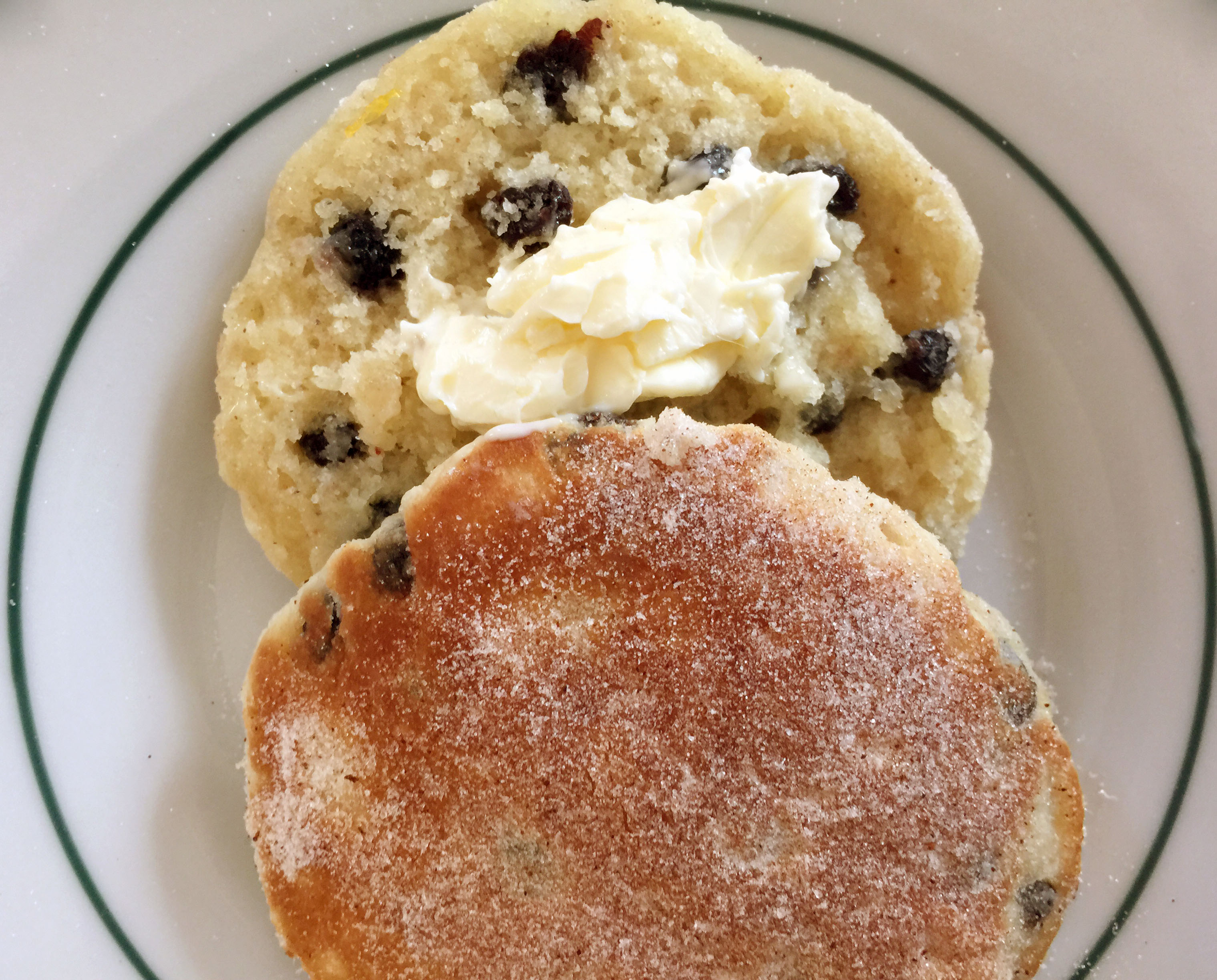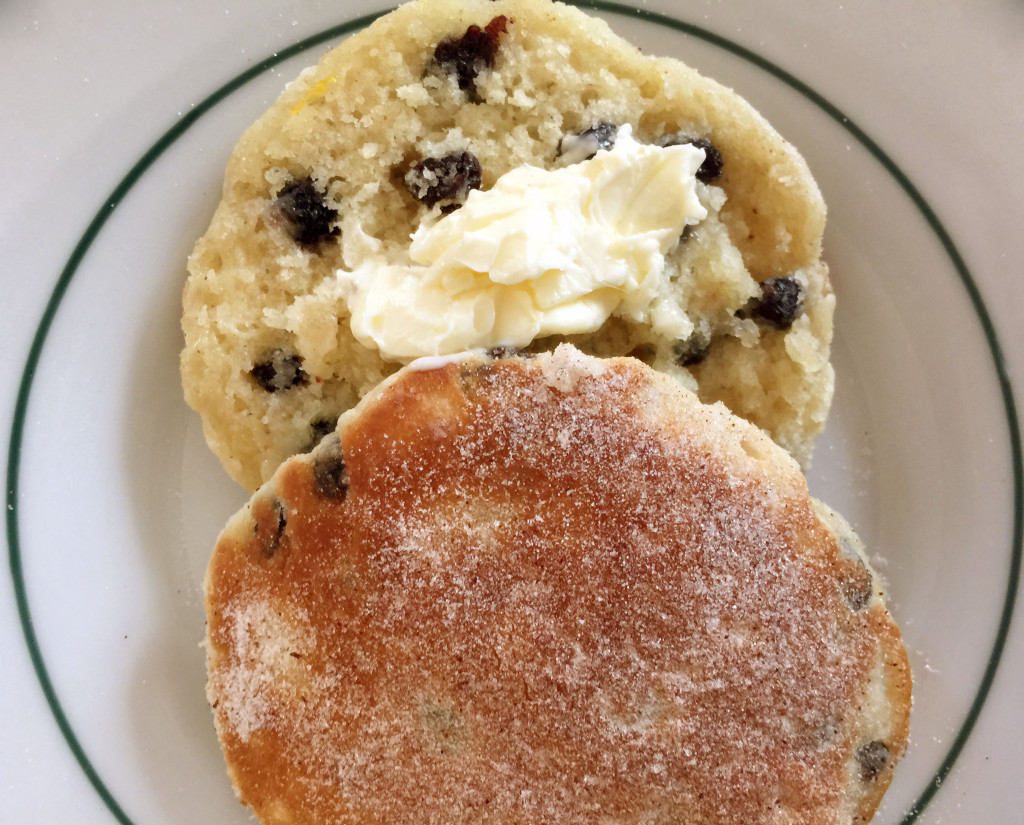 [I]magine a place where a pancake, a scone and a donut all meet. Well, apparently, that place is Wales and the treat is a very humble-looking yet flavorful little bread called a Welsh cake.
[I]magine a place where a pancake, a scone and a donut all meet. Well, apparently, that place is Wales and the treat is a very humble-looking yet flavorful little bread called a Welsh cake.
In the Welsh language, they are called “cage bach†or “picau ar y maen.†In much more pronounceable terms, they are also known as Welsh tea cakes or Welsh miner cakes, wheel cakes, slashers (!), griddle scones or bakestones, as the tradition of this old creation had the little fellows cooking on a flat baking stone over the fire. In Wales and other areas of Europe, they are popular as a tea time treat and served on the Feast of St. David, the patron saint of Wales, which is March 1.
Look for a Welsh cake recipe in a cookbook and you’ll likely only find Welsh rabbit or rarebit, of which I have also been intrigued and plan to make. But online, there are plenty of Welsh cake variations (including “jam splits,†which is as it sounds and “apple dragons†that include grated apple), but essentially it is a simple basic scone dough, spiced with nutmeg and laced with currants and cooked on a griddle like a pancake, then sprinkled with cinnamon sugar. My recipe appeared before my eyes one day from King Arthur Flour…and once I saw the Welsh cake, there was no turning back.
I’m continually astounded by all that I don’t know despite having been here forever. Heretofore, I vow to better awareness, because if I’d known that I could make something that tasted so much like a donut even thought it is not a donut, I would have gone there long ago!
if I’d known that I could make something that tasted so much like a donut even thought it is not a donut, I would have gone there long ago!
And, there is something wonderful about exploring a new territory, a traditional recipe from a foreign land I would one day like to visit (I’ve heard rumors Wales is on the ancestry assemblage). Rather than armchair travel, it’s stovetop or oven-side adventuring, and I also vow to continue here, too.
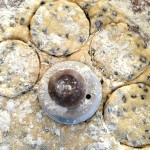
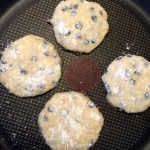 So, for these simple little cakes the dough comes together much like biscuits or scones. Dry ingredients (including sugar…this is a sweet dough), are mixed. Cold butter is cut in and currants are added. An egg whisked in milk is blended in to make a soft sticky dough.
So, for these simple little cakes the dough comes together much like biscuits or scones. Dry ingredients (including sugar…this is a sweet dough), are mixed. Cold butter is cut in and currants are added. An egg whisked in milk is blended in to make a soft sticky dough.
The dough is rolled out (extra flour is needed to contend with the stickiness), then rounds cut out using a large biscuit cutter.
The delicate cakes are placed in a medium-low heated griddle or skillet (a cast iron skillet would work, but I used my nonstick skillet…do not use anything that requires oil, if you can help it). It takes about two and a half minutes to get them browned nicely on one side, then flip and brown the other. They sizzle a little as they cook and I, the stovetop adventurer, see them browning nicely over a fire in a huge hearth.
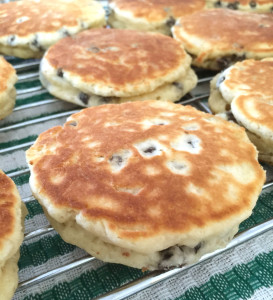 While it’s tempting to eat the cakes immediately, do allow them to cool a bit. I almost skipped the dusting of cinnamon and sugar, but it was such a nice embellishment, it was good that I didn’t.
While it’s tempting to eat the cakes immediately, do allow them to cool a bit. I almost skipped the dusting of cinnamon and sugar, but it was such a nice embellishment, it was good that I didn’t.
The finished Welsh cake looks deceptively similar to an English muffin (not that I mind — I’m a big fan) or English crumpet, so I split my first one in half and dobbed it with butter. But upon tasting, it is a whole ‘nother animal. Sweet, tender, buttery, the nutmeg is the key ingredient that makes them taste so much like a cake donut; the finish of cinnamon sugar seals the deal. Great eaten fresh, with tea or coffee, or even the next day, should you have any left. If not, make more!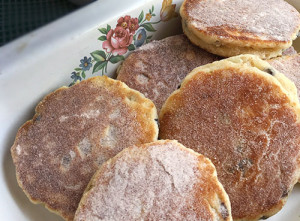
Welsh Cakes
Recipe from King Arthur Flour (www.kingarthurflour.com)
Makes about 2 dozen 2 3/4-inch cakes
3 cups all-purpose flour
1 cup granulated sugar
2 teaspoons baking powder
1/4 to 3/4 teaspoon salt**
1/2 teaspoon ground nutmeg
1 cup cold butter**, cut into pats or diced
3/4 to 1 cup currants
2 large eggs beaten with enough milk to yield 3/4 cup liquid
**Use 1/4 teaspoon salt if you use salted butter; 3/4 teaspoon if you use unsalted butter.
In a medium-sized mixing bowl, whisk together the flour, sugar, baking powder, salt, and nutmeg.
Work in the butter until the mixture is fairly evenly crumbly; a few larger pieces of butter can remain.
Mix in the currants.
Add the milk/egg mixture, mixing until the everything is moistened.
Turn the sticky dough out onto a well-floured work surface, and divide it in half. Shape each half into a thick, 4″ to 5″ disc. Cover one of the discs with plastic, and refrigerate. Leave the other on the floured work surface.
Roll the soft dough into a 9 1/2″ circle; it should be about 1/4″ thick. Be sure to lift up the dough and flour underneath it as you roll, so it doesn’t stick.
Using a 2 1/2″ to 3 1/2″ biscuit or other round cutter, cut the dough into circles. Gather and re-roll the scraps, cutting until you’ve used all the dough.
Heat an un-greased skillet over low-medium heat; an electric frying pan or skillet, set at 325°F, works well here.
Fry the cakes for about 2 1/2 minutes on each side, until they’re golden brown and cooked all the way through. It’s best to fry one sample cake first, to see if your pan is the right temperature.
Transfer the fried cakes to a rack to cool.
Repeat with the refrigerated dough. Cut the circles, then let them warm at room temperature for about 10 minutes before frying.
Dust the finished cakes with cinnamon-sugar or superfine (castor) sugar; or split them, butter, and spread with jam. A pot of tea is the perfect accompaniment.
Blogger’s Note: I cut this recipe in half and ended up with about a dozen cakes because I mistakenly thought I didn’t need to two dozen. Next time, I’ll know better!
